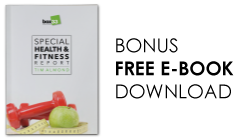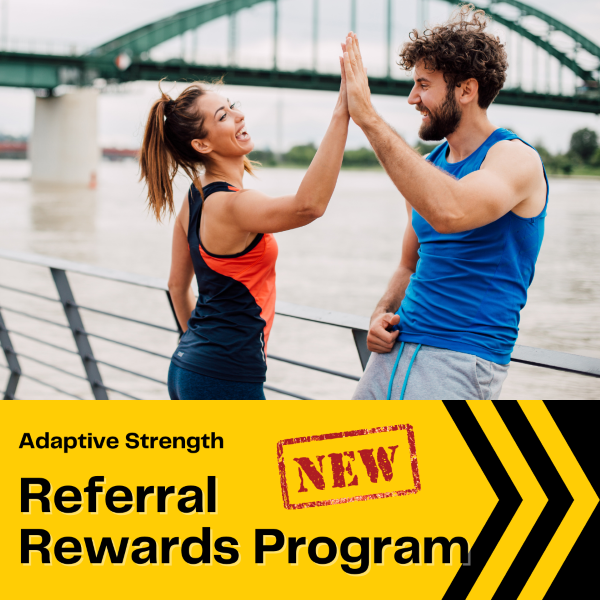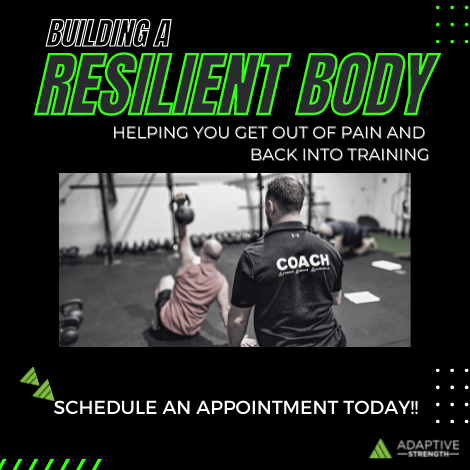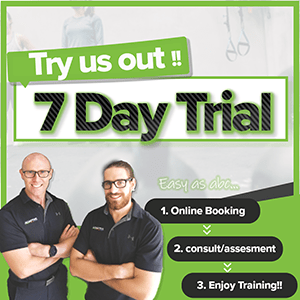After writing our recent article “Why You Don’t Need to Feel Sore to Get Stronger,” we had a lot of people reach out with a great follow-up question:
“What about weight loss? Don’t I need to feel sore and exhausted if I’m trying to lose weight?”
It’s a fair question—and a very common one. At Adaptive Strength here in Booragoon, we work with a lot of people whose goals are to get stronger and lose weight. And many of them have been led to believe that progress only counts if you leave the gym drenched in sweat, barely able to walk, and sore for days.
Let’s set the record straight: you don’t need to be sore to get stronger or leaner. In fact, the constant pursuit of soreness can actually slow down your fat loss progress.
Let’s break down why.
The “No Pain, No Gain” Trap
Somewhere along the way, fitness culture sold the idea that a workout only counts if it’s painful. If you’re not crawling out of the gym, did you even try?
Here’s what we’ve learned from working with hundreds of people in Booragoon and across Perth:
Pain, soreness, and exhaustion are not good measures of progress.
Feeling sore after every workout is not a badge of honour—it’s usually a sign that something isn’t working with your body, not for it.
Whether your goal is fat loss, strength, or both, it’s time to move beyond the “no pain, no gain” mindset.
What DOMS Actually Means
DOMS stands for Delayed Onset Muscle Soreness. It usually shows up 24–72 hours after a workout, especially if you:
- Did something new
- Did lots of reps
- Focused on eccentric (muscle-lengthening) movements
- Pushed way past your current capacity
DOMS is often the result of novelty or overload—not necessarily effective training.
So what does it really mean?
That your body is reacting to a new stimulus—not that you built more muscle or burned more fat.
Soreness is a side effect, not a sign of success.
The StrongFirst Way: Strength First, Fat Loss Follows
At Adaptive Strength, our training model is built around StrongFirst principles. This means:
- Lower reps, heavier weights
- Longer rest periods
- Precision and control over speed and chaos
This kind of training:
- Preserves lean muscle mass (crucial for fat loss)
- Improves insulin sensitivity and hormonal health
- Boosts resting metabolism so you burn more calories at rest
In short, getting stronger helps you become a more efficient fat-burner—without needing to leave the gym in a puddle of sweat.
Fat Loss Without the Burnout
A lot of weight loss programs push high-rep circuits or back-to-back HIIT sessions every day. These may feel intense (and make you sore), but over time, they can work against your goals.
Here’s why:
- They spike stress hormones like cortisol, which can interfere with fat loss and muscle recovery.
- They increase cravings and decrease energy, making it harder to stick to a healthy routine.
- They burn you out, leading to inconsistent attendance and plateaus.
Instead, we focus on training that’s intense enough to drive results—but smart enough to let you recover. Pair that with nutrition coaching and lifestyle support, and you get sustainable fat loss without the burnout.
Measuring Progress Without DOMS
If soreness isn’t the measure of progress, what is?
Here’s what we look for at Adaptive Strength:
✅ You’re getting stronger
Lifting more weight with better technique means your body is adapting—and that’s a win.
✅ Your energy is up
You’re feeling more alert, focused, and capable throughout the day.
✅ Your sleep is better
Quality training improves sleep, which supports both fat loss and muscle recovery.
✅ Your clothes fit better
This often happens before the scale moves. Less bloating, improved posture, and better muscle tone.
✅ You’re more consistent
And this is the biggest one. The people who train consistently—even without soreness—make the most progress long-term.
The Recovery Advantage
When your workouts don’t leave you limping for three days, you can train more often and with higher quality. That’s a big deal for fat loss.
The body changes through consistent, repeated effort over time—not through once-a-week punishment sessions.
When you recover well:
- You build lean muscle faster
- You maintain motivation
- You reduce your risk of injury or setbacks
Recovery is not just important—it’s a secret weapon for getting leaner and stronger.
When Soreness Might Still Happen—and That’s Okay
We’re not anti-soreness. It’s totally normal to feel a bit of DOMS:
- When you try a new exercise
- When we introduce more volume or time under tension
- After a planned intensity block in your program
What we’re saying is this: you don’t need to chase soreness to make progress.
Soreness is just one possible response—not a required outcome.
And when it does happen?
Focus on hydration, movement (not rest), protein intake, and good sleep. You’ll bounce back faster and feel ready to train again.
Conclusion: Stronger, Leaner, Smarter
You don’t need to feel sore to get strong.
And you don’t need to feel wrecked to lose weight.
At Adaptive Strength, we help people across Booragoon and the greater Perth area achieve real, lasting change by focusing on strength, recovery, and consistency.
Soreness might feel like a sign that something happened… but progress comes from what you can keep doing, not what breaks you down.
So if you’re training consistently, eating well, sleeping better, and lifting heavier each month—you’re on the right track.
Stay the course. Skip the soreness.
And remember:
Strong first. Fat loss follows.
FAQ
“I’m not sore—should I push harder next session?”
Not necessarily. If you’re making progress in strength, energy, or fat loss, you’re already on track. Don’t force intensity just for the sake of soreness.
“Doesn’t high-intensity training burn more calories?”
It can in the short term, but lifting heavy builds lean muscle—which boosts your metabolism all day. Plus, sustainable fat loss comes more from nutrition and consistency than daily calorie burn.
“Isn’t cardio better for losing weight?”
Cardio can help, but strength training is more effective for long-term fat loss because it preserves (or builds) muscle. Muscle tissue is metabolically active—it helps you burn more calories around the clock.
Located in Booragoon and working with clients across Perth, Adaptive Strength helps you build a stronger, leaner, more resilient body—without the soreness obsession.
Ready to start smart, sustainable training?
👉 Book Your Free Consult at Adaptive Strength







